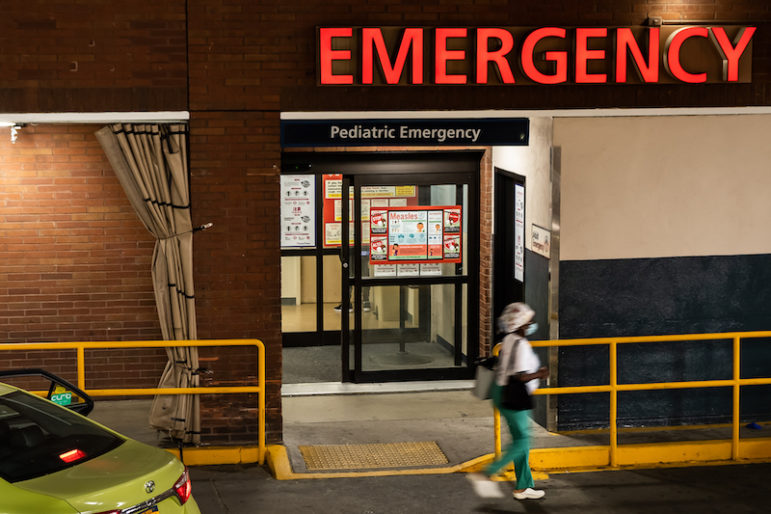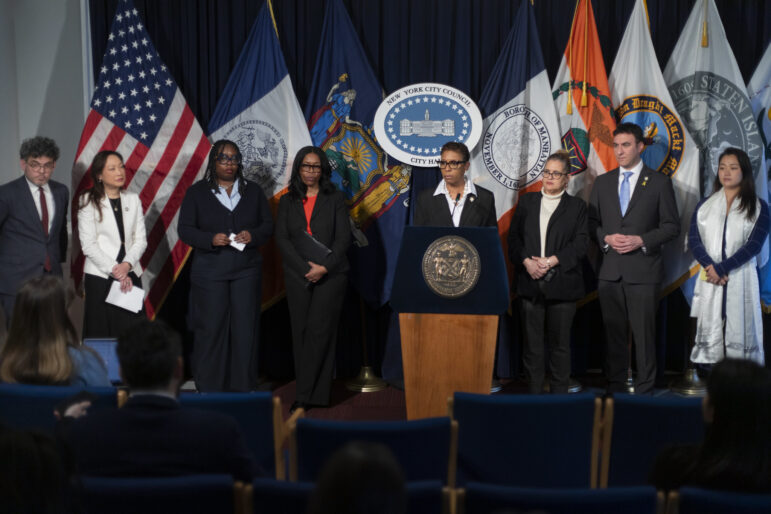
Photo by: RGB
A public hearing of the Rent Guidelines Board.
People talk a lot about poverty but they seldom talk about what makes people poor. Forty-four years of significant, consistent rent increases make people poor. Forty-four years of rent increases are undeniably why new Yorkers are paying 30 percent, 50 percent, even 75 percent of their income in rent. In the last 44 years, there were years if not decades that justified rent rollbacks, not to mention rent freezes. In the 70’s and 80’s, Bronx and Brooklyn were burning. During the same time, banks redlined entire neighborhoods. In the mid-2000’s real estate companies like Ocelot, Normandy and Urban American bought rent-stabilized buildings in waves with a very public plan of harassing tenants to make 30 percent of tenants a year move out in order to increase rents. Soon afterwards, we saw economic devastation in the form of a massive recession that hit poor New Yorkers harder than anyone else in the city. We are still in recovery. During all of this, landlords saw increases.
One of the things that makes rent stabilization unique is that it is democratic in nature. Landlords, tenants, city officials and agencies present their cases about whether or not rents should go up for the 2.5 million tenants covered by rent stabilization, in front the Rent Guidelines Board (RGB), a nine-member board appointed by the mayor. But when the board became the opposite of what it was meant to be—unfair, political and so clearly in the hands of the landlords— tenants stopped showing up because there was simply no hope for democracy. Landlords showed up in droves. It’s no surprise that the city witnessed a massive decline in civic and democratic participation at these hearings.
This year, things are different. For the first time in New York’s history, New Yorkers stand a chance at getting a break in constant increases in rent. But there is much more at stake than just a rent freeze. The hope that has inspired people to action, to participate in their democracy, to exercise their rights—that’s at stake too.
This year, at the first public hearing of the RGB that took place in the Bronx last Thursday, tenants outnumbered landlords by 350 to 1. More than 350 tenants packed Hostos College. Over a hundred testified, and everyone demanded a rent freeze. Tenants closed down the hearing at 10.30 p.m., more than two-and-a-half hours after two of the public members of the RGB left.
At Monday’s daytime hearing in Manhattan, a host of Councilmembers, including the Speaker, testified in favor of a rent freeze. While landlords organized to attend and testify at this hearing, they were still largely outnumbered. A hearing that was supposed to end at 6 p.m. ended at 8:30, with more than 75 tenants testifying.
Given what has taken place over the last 44 years, tenant turnout at this year’s hearings has been unprecedented. But this remarkable display of democracy has little to do with the efforts of the RGB or the administration. While tenants and tenant advocates applaud the administration for appointing fair-minded people to the board and for holding outer-borough and evening hearings, the RGB has a long way to go to making the hearings an example of democracy.
For instance, the RGB does little to no advertising to the public about the “public hearings.” For every tenant that showed up in the Bronx, there are easily five that don’t know they have the right to testify, let alone know about the dates and times of upcoming hearings. The RGB should have advertised the public hearings, especially in light of a well-funded landlord advertising blitz, which ironically threatened New Yorkers with what most tenants already experience: a lack of basic services. The board should have worked with local news media outlets, put out fliers in libraries and schools, worked with the state agency that oversees rent stabilization and has a list of all of rent-stabilized tenants, the Department of Homes and Community Renewal (HCR), to send notices to rent stabilized tenants. While there is a resolution before the city council in support of the RGB working with HCR, this is not enough. The administration could have and should have funded outreach and educational initiatives.
In a city marked by national, racial and ethnic diversity, it is unacceptable that the hearings do not equally accommodate non-English speakers. Interpreting testimonies into English for non-English speakers does not qualify as equal access (though that would be an improvement)—it assures the board understands the testimonies but it doesn’t ensure that the non-English speaking members of the public understand the proceedings. Interpretation should be simultaneously done in the top languages most spoken in our city. How are tenants supposed to know they can testify in their language if all of the RGB materials are only in English, if all of the proceedings are only in English and if no one makes announcements in their language letting them know the procedures? What message are we sending to New Yorkers who don’t speak English? In this city, if the overwhelming number of people who participate in a democratic exercise are English speaking, like at the first two RGB hearings, it must be considered a sign of inequality of access.
In addition, what message are we sending to New Yorkers when the hearings are plagued by forceful, unnecessary security that scare tenants away and delay them from entering for prolonged periods of time? At this year’s hearing in the Bronx—in a neighborhood historically plagued by stop and frisk–armed guards held up more than 100 tenants from entering the college, despite adequate seating inside. Tenants peacefully waited for more than an hour, as the CUNY guards let them in 10 at a time. Anyone without an orange CASA t-shirt (CASA stands for Community Action for Safe Apartments) was allowed immediate entry. A similar situation occurred a month earlier at the RGB’s preliminary vote on May 5th.
The board and the administration must remember that inequality of outcomes is inextricably linked to inequality of access, process and power. The RGB staff says they can’t advertise because they have no staff to do it. That means that the city has cut resources to one of the few city agencies that has a direct impact on tenants. The RGB needs to be fully funded so that it can do outreach and education and so that it can find venues that are accessible and safe. The RGB must be fully funded to make this process work.
Hopefully these are growing pains that the new administration and the new board will tackle in the coming years with integrity, respect and openness. But the change of course for the outcomes of the RGB’s decision can’t wait. The data overwhelmingly supports a rent roll back for tenants. A rent freeze for two years is the least the board can do.
The data to support a rent freeze has been clearly laid out by David R. Jones [the head of CSS, City Limits’ parent company] in his Daily News op-ed, by the city’s Comptroller, by the Speaker of the City Council and countless others. The state law that governs the board mandates it to consider the finances of both landlords and tenants. For the past 44 years, the board has disproportionately considered the landlords’ interest to that of tenants.
At a time when our city is plagued by extreme and increasing inequality that has been caused in part by the board’s consistent decisions to raise rents in violation of its mandate, we are calling for a rent freeze. This isn’t a political favor. This isn’t about a mayoral campaign promise. We are calling for a rent freeze because the data supports it, because New Yorkers need it, because we want to live in a vibrant, diverse and equitable city. We want a rent freeze because nothing else we do to make this city better matters if New Yorkers can’t live here.
We are calling for a rent freeze because, against all odds, New Yorkers are showing up to demand a rent freeze. If we care about and respect our democracy, we know that this means something special—something worth fighting for and protecting. A vote for anything more than a rent freeze will show New Yorkers that it’s politics as usual. All of us deserve better than that.








